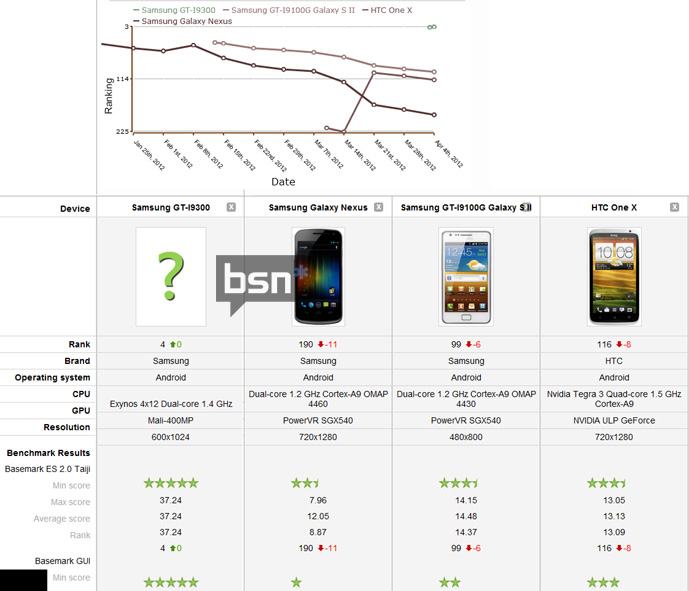Blog
TESTED: Samsung Galaxy SIII is Dual-Core, No HD Display, Amazing Performance?
Published
14 years agoon
By
ArchivebotThe wait is almost over: Samsung Galaxy SIII i.e. GT-i9300 will debut in the next couple of weeks, followed by world-wide availability. We learned few surprises, though.
For a very long period of time, it was speculated what screen will power the Samsung Galaxy SIII i.e. GT-I9300. Galaxy SII (GT-I9100) shipped with 4.3″ Super AMOLED Plus screen and 800×480 resolution. Current high-end, Galaxy Nexus (GT-I9250) features a massive 4.65 inch Super AMOLED Plus display with 1280×720 (i.e. HD Ready resolution). The rumors about the screen were quite wild, with some rumors even claiming a 1920×1080 resolution in a 4.8″ screen. Besides the fact that such display doesn’t exist (yet), it seems that Samsung decided to remain in the 4.3″ display range, but the company wasn’t able to bring HD Ready resolution in a small OLED matrix. Instead, the Galaxy SIII uses 4.3” Super AMOLED Plus display with 1024×600 resolution, which we saw on a large number of netbooks and first generation Android tablets.
Furthermore, processing power increased, but not to the factor you might have expected it. Galaxy SIII GT-I9300 will come with the same Exynos SoC which debuted in Galaxy Note 10.1 N8000, i.e. two Cortex-A9 cores operating at 1.4GHz, paired with a more powerful version of Mali T-400MP. The exact number of shader cores won’t be known until the release date of either the tablet or the phone. If benchmark results hold true, Samsung Galaxy SIII will not feature a quad-core processor, as it was widely rumored.

Samsung I9300 (SIII) vs. I9250 (G Nexus) vs. I9100 (SII) vs. HTC One X
In terms of performance, screenshot above compares the Galaxy SIII to its predecessor (Galaxy SII), current high-end (Galaxy Nexus) and a quad-core Tegra 3 powered phone, the HTC One X. RightWare’s Basemark ES 2.0 Taiji benchmark stresses the GPU portion of the chip, and it runs the benchmark in a native resolution. Thus, the results are not apples-to-apples but from the framerates extracted, you can see the amount of performance you can expect with GT-I9300.
If we take results from Pantech Vega (Qualcomm MSM8960) and Huawei’s Ascend D quad XL phone (Hisilicon K3V2), it looks like Galaxy SIII will only be third best performing phone in this demanding GPU benchmark, with Adreno 225 GPU in Pantech leading the way, and Hisilicon Vivante-licensed GPU being close second.
This year is more and more looking like dual-core versus quad-core, and we’re not that certain Samsung holds the best cards (which was the case with Galaxy SII and Galaxy Nexus).
Original Author: Theo Valich
This news article is part of our extensive Archive on tech news that have been happening in the past 10 years. For up to date stuff we would recommend a visit to our IT News section on the frontpage. Additionally, we take great pride in our Home Office section, as well as our VPN Reviews, so be sure to check them out as well.

You may like

Tanah Merah to Bintan: Why Resort Ferries Aren’t Just for Tourists

Busting the Common Myths Of Online Slot Machines Being Rigged

INR-Based Stablecoins: The Next Growth Driver for the Tron Ecosystem in Emerging Markets in 2025

How to Transfer Money from the UK: A Complete Guide

How to Future Proof Your Custom Software Product

Beginner’s Guide to the Best Capture Cards for Dual‑PC Streaming (2025)

Regulasi Broker Forex: Lesen Mana Sebenarnya Penting untuk Trader?

Best Wi‑Fi 6E Routers for Low‑Latency Gaming (2025)

Best 240Hz Gaming Monitors for CS2 (2025): Tested Picks for 1080p, 1440p & 4K

